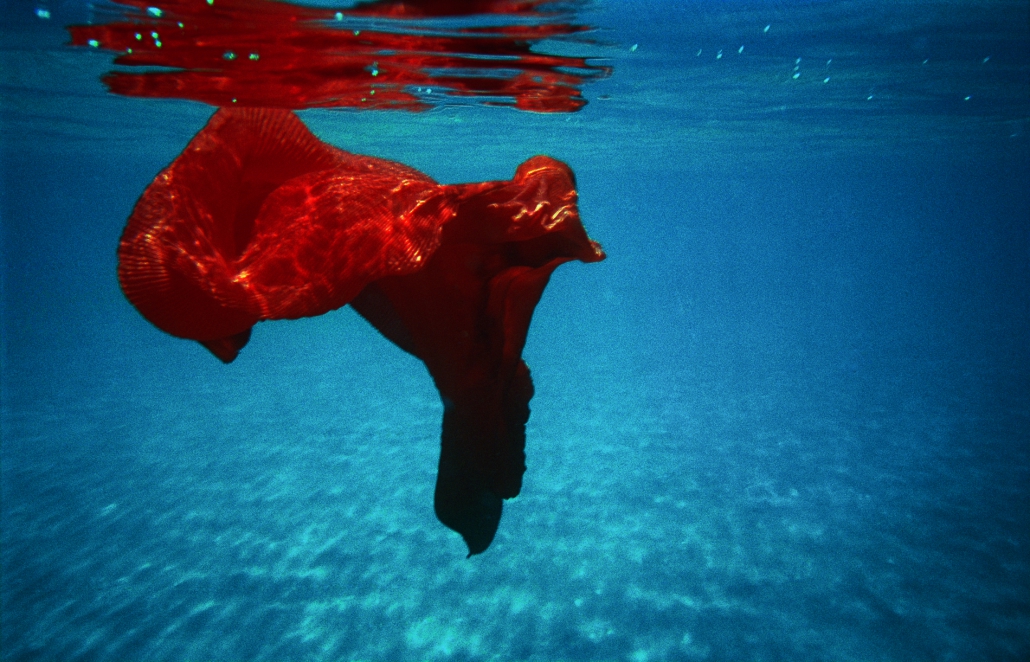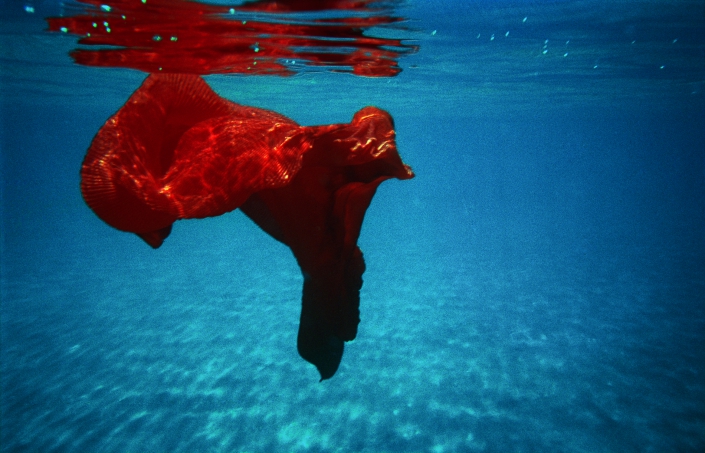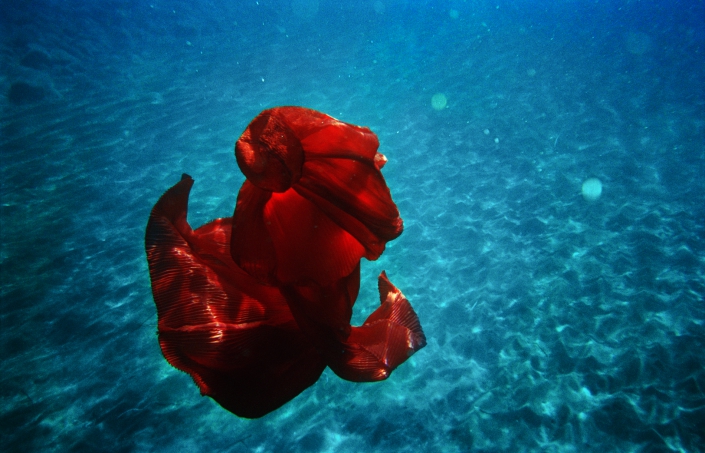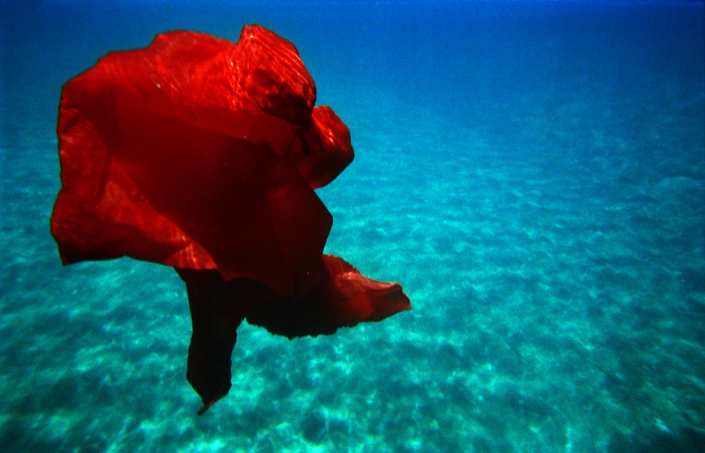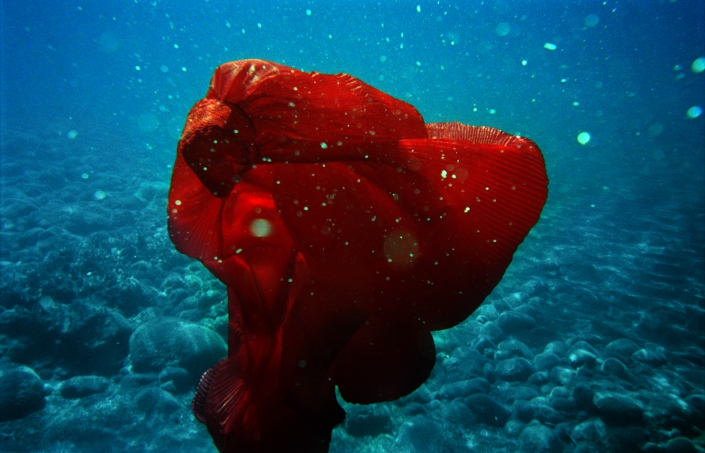MARIJA NUJIC | Double Perception
The red burka, under water, takes the form of the snail Ballerina Española (Spanish dancer, lat. hexabranchus sanguineus). The name of this snail shape describes a human expression: the rhythmic wave movement of her cloak is reminiscent of a Spanish flamenco dancer. In the next moment a jelly sh or an octopus takes shape – the creatures’ patterns suddenly seems to overlap. Although it is merely a burka, it takes various forms. The intense red embodies the colour of the blood, which all humans have in common. In the Old Testament the name of the first man, Adam, is attributed to the red earth. The words “blood” and “red” have etymologically a common origin in Hebrew. On the one hand, the colour red represents life, while on the other hand, it is associated with negative qualities, since it was also assigned to the Greek god of war Ares. Thus, it stands for many meanings among others, i.e. war, destruction and bloodshed. Just as the colour red has a dual meaning, there is a double perception in Marko Zink’s œuvre.
In 2010 (the year of origin of the series burka), neither political developments, nor the consequences from them, such as the destabilization of the Middle East, the Syrian war, the increasing ow of refugees, the discussion of burka bans, were evident. Although this series was established at a time when these interpretative directions did not yet exist, they nevertheless refer to the problems highlighted by current issues. “I am convinced that art must be political,” the artist explained in an interview. The burka can, therefore, be regarded as a political symbol, symbolizing the escape from another continent, an- other country, another culture and religion across the Mediterranean sea, away from war, destruction and bloodshed. Its red color also rep- resents life and the idea that, speaking in religious historical terms, all people are descended from Adam and Eve, or, in evolutionary terms, from the sh in the sea. Although the intention at the beginning of the series was a completely different one, it now receives a new interpretational character. Contemporary progression allows this reading option.
Through this dual perception of the finiteness in the in nite, in the moment of present and future, the images are supported by harmonic aesthetics, despite their seemingly contrary expressiveness: light, hovering, peaceful. They show materials, inanimate objects, which for a brief moment appear alive and are given a natural body. This moment is being.

